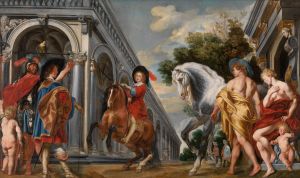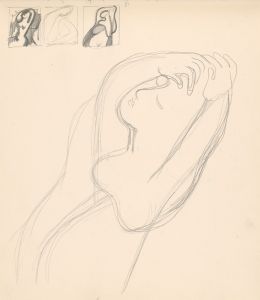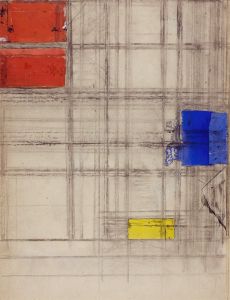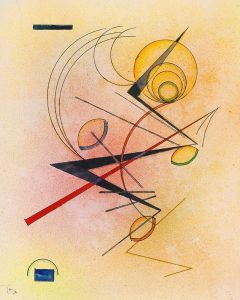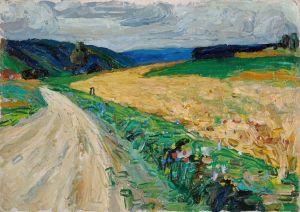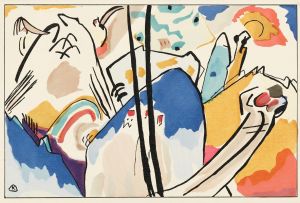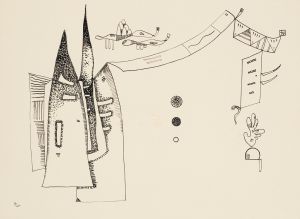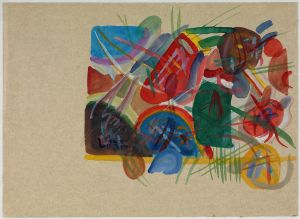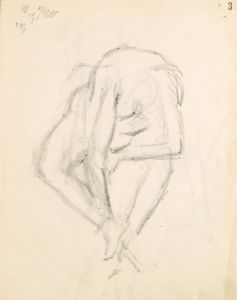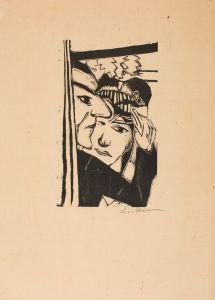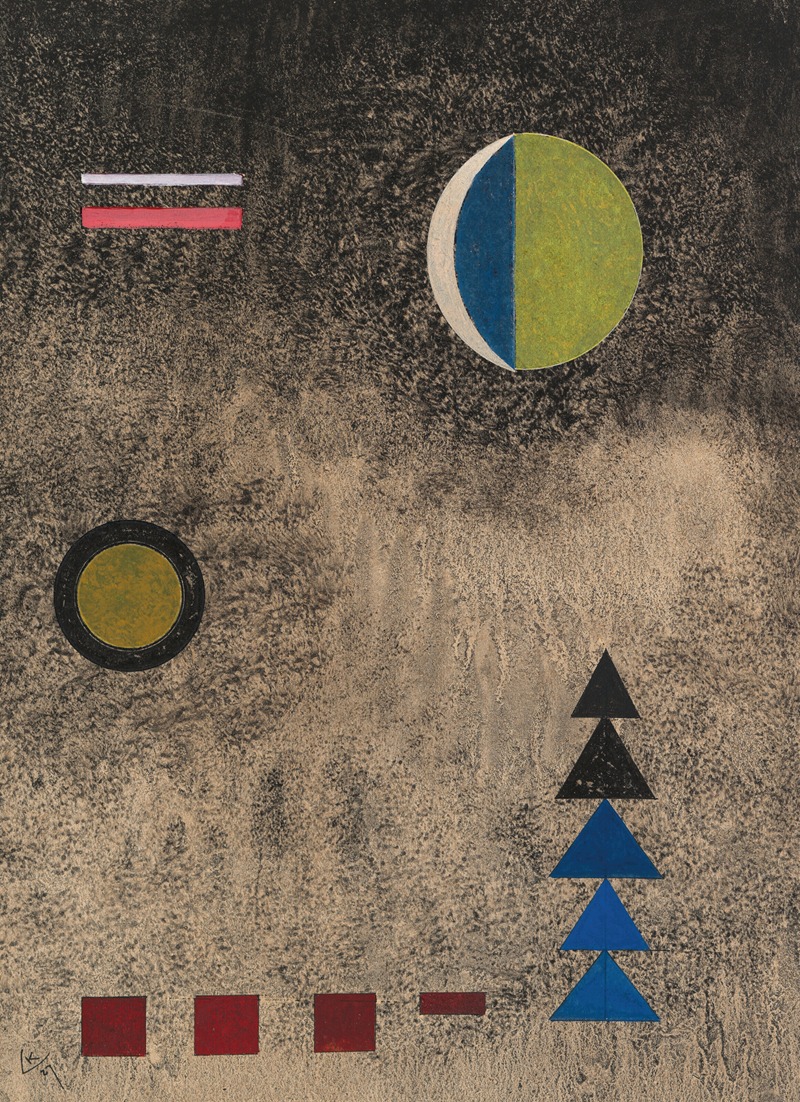
Im lockeren Schwarz
A hand-painted replica of Wassily Kandinsky’s masterpiece Im lockeren Schwarz, meticulously crafted by professional artists to capture the true essence of the original. Each piece is created with museum-quality canvas and rare mineral pigments, carefully painted by experienced artists with delicate brushstrokes and rich, layered colors to perfectly recreate the texture of the original artwork. Unlike machine-printed reproductions, this hand-painted version brings the painting to life, infused with the artist’s emotions and skill in every stroke. Whether for personal collection or home decoration, it instantly elevates the artistic atmosphere of any space.
"Im lockeren Schwarz" is a painting by the Russian-born artist Wassily Kandinsky, created in 1927. Kandinsky is widely regarded as one of the pioneers of abstract art, and his works are known for their vibrant use of color and innovative compositions that break away from traditional representational art.
The title "Im lockeren Schwarz" translates to "In Loose Black" in English. This painting is a part of Kandinsky's later works, which are characterized by a more geometric and structured approach compared to his earlier, more fluid and organic compositions. During this period, Kandinsky was deeply influenced by his time at the Bauhaus, a revolutionary art school in Germany where he taught from 1922 until its closure in 1933.
"Im lockeren Schwarz" exemplifies Kandinsky's mature style, where he employed a precise arrangement of shapes and lines, often using a limited color palette to create a sense of harmony and balance. The painting features a dynamic interplay of geometric forms, including circles, triangles, and lines, set against a predominantly black background. This use of black is significant, as it provides a stark contrast that highlights the vivid colors and intricate details of the shapes.
Kandinsky's work during this time was heavily influenced by his theoretical writings on art, particularly his book "Point and Line to Plane" (1926), where he explored the emotional and spiritual effects of different shapes and colors. In "Im lockeren Schwarz," the careful placement of each element reflects his belief in the power of abstract forms to convey deeper meanings and emotions.
The painting is also a testament to Kandinsky's interest in synesthesia, the phenomenon where one sensory experience can evoke another. He often described his paintings in musical terms, and "Im lockeren Schwarz" can be seen as a visual symphony, with each shape and color contributing to an overall sense of rhythm and harmony.
"Im lockeren Schwarz" is housed in the Städtische Galerie im Lenbachhaus, a museum in Munich, Germany, which holds one of the most significant collections of Kandinsky's works. The Lenbachhaus is renowned for its extensive collection of art from the Blue Rider (Der Blaue Reiter) movement, of which Kandinsky was a founding member. This movement, active in the early 20th century, sought to transcend the boundaries of traditional art by emphasizing spiritual and emotional expression through abstract forms.
In summary, "Im lockeren Schwarz" by Wassily Kandinsky is a notable example of his later abstract work, reflecting his theoretical explorations and his time at the Bauhaus. The painting's geometric precision and use of color demonstrate Kandinsky's belief in the power of abstract art to evoke profound emotional responses. It remains an important piece within the collection of the Städtische Galerie im Lenbachhaus, highlighting Kandinsky's enduring influence on the development of modern art.





